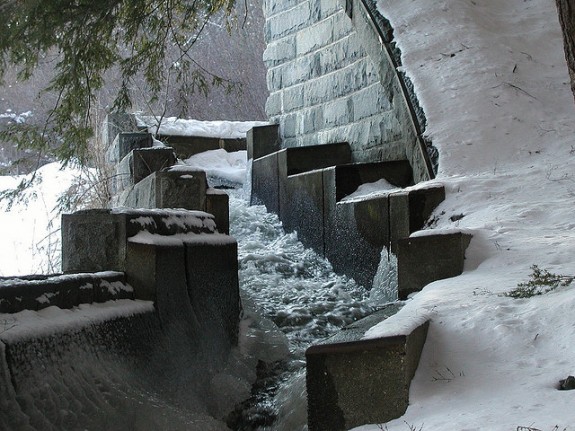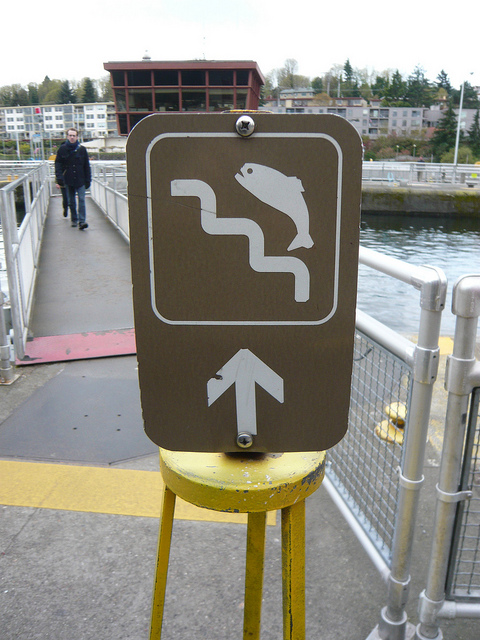Scientists’ Best Idea for Saving Endangered Fish Isn’t Really Working
Fish ladders, meant to help swimming fish navigate dams, don’t really work

A fish ladder in Massachusetts. Photo: Dan Mushrush
Starting in the 1960s, the fish ladder, designed to help endangered fish species make their way through rivers blocked by dams, was rolled out across the country. Installing a dam can do a lot of good: it can help control flooding, stabilize the availability of water year-round and generate electricity. But when the dam blocks fishes’ free access to the length of a river, it can seriously hamper the fishes’ spawning behavior. The fish ladder—a side access around a dam that fish can swim up—was meant to be the savior for all fish kind.
There’s only one problem: fish aren’t really using them. That is, they can use them, and they sometimes do use them, but, says Scientific American, they aren’t really using them as scientists once hoped they would.
Although these passages are monitored to ensure that fishes use them, a new study by ecologists and economists shows that very few fishes actually pass through to reach their spawning grounds, which exacerbates the decline in fish populations.

Silly sign, fish can’t read you. Photo: Jessica Spengler
Tests show that fish can navigate the ladders, but a scatter-shot approach to implementation means that population restoration goals aren’t being met.
One problem is that some fish passages are maladapted to the fishes they were built to help. A 2001 report by the United States Geological Survey showed that some fishes require specialized fishways because they cannot maneuver on ladders, which are meant to simulate natural rapids. For example, Atlantic salmon and river herring can easily navigate fish ladders because they naturally plunge through headwaters. Sturgeon and striped bass, on the other hand, do not possess the same swimming ability.
And, says Scientific American, even if the fish take the ladders upstream, they sometimes don’t make it through the return trip alive.
A 1994 study in Transactions of the American Fisheries Societyfound that some fish species get killed attempting to pass through turbines. “We’ve taken species that spawn more than once in their lives and turned them into one-time spawners,” says John Waldman, a professor of biology at Queens College, The City University of New York, one of the authors of the new study.
The only real solution, the scientists suggest, says Science, is to get rid of the dams.
More from Smithsonian.com:
World’s Coolest Animal Bridges
On California’s Coast, Farewell to the King Salmon
/https://tf-cmsv2-smithsonianmag-media.s3.amazonaws.com/accounts/headshot/smartnews-colin-schultz-240.jpg)
/https://tf-cmsv2-smithsonianmag-media.s3.amazonaws.com/accounts/headshot/smartnews-colin-schultz-240.jpg)